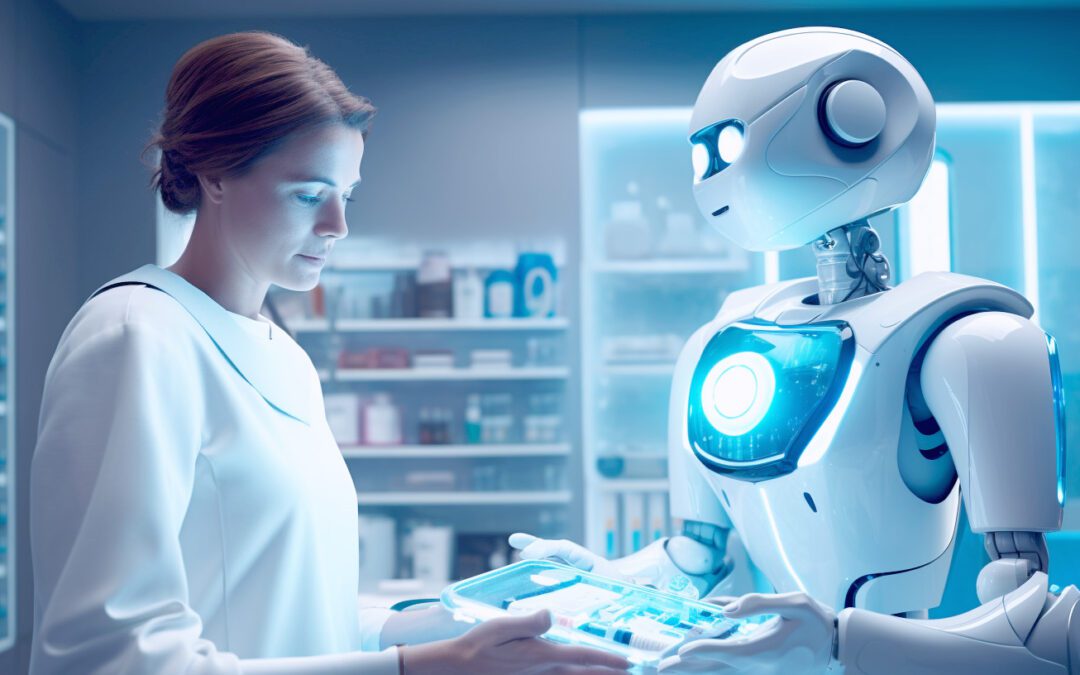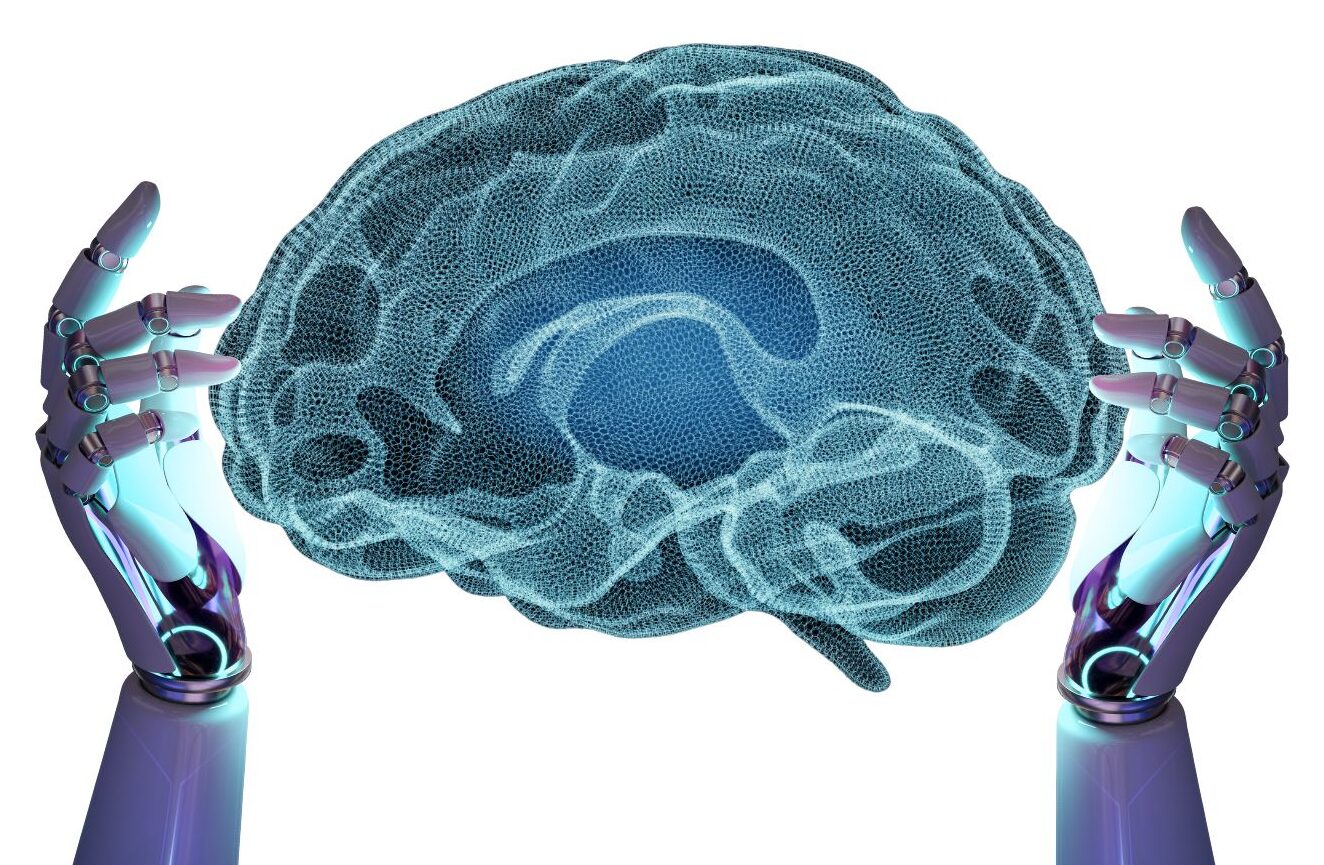Imagine this: you walk into a doctor’s office, and instead of being greeted by a human physician, you are met by a robot. It may sound like something from a science fiction movie, but it’s slowly becoming a reality in today’s evolving healthcare industry. AI & Robotics, once confined to the realm of futuristic fantasies, is now reshaping medical care, influencing everything from diagnosis and treatment to rehabilitation.
With advancements in technology, the use of robotics in healthcare is no longer limited to just surgery. Today, robots are being used in a wide range of medical settings, from hospitals and clinics to nursing homes and even in patients’ homes. These machines are being programmed to perform a variety of tasks, such as assisting with surgeries, administering medications, and even providing emotional support for patients.
The use of robotics in healthcare is still relatively new, but it’s already showing tremendous promise. Robotics has the capacity to enhance efficiency, minimize human error, and elevate patient outcomes. However, as with any new technology, there are also challenges and ethical considerations that must be taken into account. In this blog post, we will explore the use of robotics in healthcare, its benefits and challenges, and what the future holds for this exciting field.
By reducing the need for human labor and minimizing the risk of errors and complications, robotics can help healthcare facilities operate more efficiently and effectively, saving money on labor and reducing the need for expensive interventions.

The Benefits of Using Robotics in Healthcare
The use of robotics in healthcare provides numerous benefits, including increased precision and accuracy. Robots are carefully programmed to perform tasks towith incredible precision and accuracy, minimizeing the risk of errors and accidents. This is particularly crucial in delicate procedures such as surgeries, where even the smallest mistake can have serious consequences.
Increased efficiency is another advantage of employing robots in healthcare. They can perform specific tasks more rapidly and effectively than humans, allowing healthcare professionals to concentrate on more critical responsibilities. From filling and dispensing medications to checking vital signs and transporting items within a hospital, robots enable nurses and doctors to focus on more complex and demanding work.
Robots can also enhance safety by performing tasks that are too dangerous for humans. For instance, robots can handle hazardous materials or work in environments that are too toxic or radioactive. Additionally, they can reduce the risk of human exposure to infectious diseases by carrying out tasks remotely, decreasing the necessity for direct contact with infected patients. The Centers for Disease Control and Prevention (CDC) highlights both the benefits and safety concerns for humans as robotics are utilized in such environments. Robots can also provide better access to care, especially in remote or underserved areas where access to healthcare is limited.
While the initial investment in robotics can be significant, it will likely lead to long-term cost savings. By reducing the need for human labor and minimizing the risk of errors and complications, robotics can help healthcare facilities operate more efficiently and effectively, saving money on labor and reducing the need for expensive interventions.
The Challenges of Implementing Robotics in Healthcare
While the integration of robotics in healthcare offers numerous advantages, it also presents several considerable challenges that must be addressed for successful implementation. These challenges include high costs, resistance to change, ethical and legal concerns, integration with existing systems, and ongoing maintenance & support.
One of the most significant challenges is the high cost of investment. The initial cost of purchasing and installing robotic equipment can be prohibitively expensive, particularly for smaller healthcare facilities with limited resources. In addition to the upfront costs, there are ongoing expenses associated with maintaining and repairing the equipment, which can be a significant burden on healthcare budgets.
Resistance to change further complicates the adoption of robotics in healthcare. Historically, the healthcare industry has been slow to adopt new technologies, leading to possible resistance from professionals skeptical of robotics’ benefits. There may also be apprehension from patients about receiving care from robots. Therefore, it is crucial to ensure that healthcare professionals receive proper training and support to use the technology effectively.
Integrating robotics with existing healthcare systems can also be a significant challenge. Many facilities operate with legacy systems, which might not easily align with cutting-edge technologies like robotics. This misalignment can lead to issues in data sharing, system collaboration, and communication. Ensuring that robotic systems can properly communicate with electronic health records and other healthcare technologies is essential for effective implementation.
Ethical and legal considerations present yet another obstacle that must be navigated. An article pinpointing the major ethical challenges warns that “current policy and ethical guidelines for AI technology are lagging behind the progress AI has made in the healthcare field,” calling for these important discussions to be had. The utilization of AI & robotics in healthcare raises concerns over accountability for errors or malfunctions, along with the implications for patient privacy and confidentiality. These ethical and legal issues need to be addressed to ensure that the use of robotics in healthcare is compliant with regulations and that patient safety and privacy are protected.
Moreover, the maintenance and support of robotic systems are critical factors to consider in their integration into healthcare. Robotic systems require regular maintenance and repair, and healthcare facilities must have the resources and expertise to perform these tasks. The lack of trained personnel and support infrastructure can result in downtime and reduced efficiency, negating the benefits of implementing robotics in the first place.
The use of robotics in healthcare poses several challenges that must be addressed for successful implementation. Overcoming these challenges will require collaboration between healthcare professionals, technology providers, and policymakers. Together, they can work to ensure that robotics is seamlessly woven into the fabric of healthcare delivery, augmenting capabilities without compromising ethical or operational standards.
The Future of Robotics in Healthcare
The potential applications of robotics in healthcare are vast, but the future of this technology is bright. As technological advancements continue to evolve, we can expect to see further developments in the field of robotics in healthcare, with robots playing an increasingly important role in the delivery of care.
The global medical robots market is projected to reach $12.7 billion by 2025. One report highlights future capabilities that could allow robotics to personalize treatment further and also play a greater role in cancer treatments.
Robots, with their ability to sift through and analyze vast amounts of patient data, can usher in a new era of precision, leading to more accurate diagnoses and individualized treatment plans. This can improve patient outcomes and reduce healthcare costs by minimizing trial-and-error approaches to treatment.
Another significant area of growth is robotic surgery. As technology continues to evolve, robotic-assisted surgeries will become more precise, allowing surgeons to perform complex procedures with greater accuracy and less invasiveness. This can enhance patient outcomes, shorten recovery spans, and lower hospitalization costs.
Remote healthcare is another area where robots can play a significant role. With telemedicine and remote healthcare becoming more prevalent, robots can provide care to patients in remote or underserved areas. Equipped to monitor vital signs, carry out routine functions, and even dispense medication, robots are enabling healthcare professionals to extend their reach, offering care from offsite locations.
Elderly care is another area where robots can make a significant impact. With an aging population, there is a growing need for elderly care. Robots can provide companionship, assist with daily activities, and monitor the health of elderly patients. These capabilities may allow seniors to live independently in their homes longer, offering necessary assistance that can reduce the burden on caregivers and family members, and improve the quality of life for all involved.
The future of robotics in healthcare is promising, and as technology continues to evolve, we can expect to see even more applications of robotics in healthcare delivery. Collaboration between healthcare professionals, technology providers, and policymakers will be essential to ensure the successful integration of robotics into healthcare delivery, with robots playing an increasingly important role in the future of healthcare.
In conclusion, the use of robotics in healthcare is transforming the industry in significant ways. While challenges exist in implementing robotics in healthcare, the benefits are numerous and can lead to better patient outcomes, increased efficiency, and reduced healthcare costs. The incorporation of robotics into healthcare provides a remarkable opportunity to enhance the delivery of care and positively impact the lives of patients. As this technology continues to advance, it will be essential to integrate it responsibly and ethically, focusing on improving patient outcomes and the overall quality of care.
References
AdventHealth University. (2021, March 17). Robotics in healthcare: Improving patient care and outcomes. AdventHealth University Blog. Retrieved March 26, 2023, from https://www.ahu.edu/blog/robotics-in-healthcare
Broderick, J. M., & O’Reilly, P. (2021). Robots and the COVID-19 pandemic: the role of robotics in pandemic preparedness, response and recovery. Robotics, 10(1), 21. doi: 10.3390/robotics10010021
Burgner-Kahrs, J., & Rucker, D. C. (2018). Robotics in healthcare: past, present, and future. Robotics and Automation Letters, 3(2), 1033-1040. doi: 10.1109/LRA.2018.2797383
Dolatabadi, E., Ahmadi, H., & Ghasemzadeh, H. (2018). Robotics and healthcare: a vision of the future. Journal of Medical Systems, 42(12), 264. doi: 10.1007/s10916-018-1080-4
Jang, S., & Park, S. (2018). Robot-assisted telemedicine for older adults with chronic conditions: a systematic review and meta-analysis of effectiveness and feasibility. International Journal of Medical Informatics, 114, 144-155. doi: 10.1016/j.ijmedinf.2018.03.008
Kuhn, T., & Basch, P. (2019). Ethical dimensions of using artificial intelligence in health care. AMA Journal of Ethics, 21(2), E121-128. doi: 10.1001/amajethics.2019.121
Kung, K. S., & Tarbell, M. A. (2018). Robots in medicine: past, present, and future. Journal of Medical Systems, 42(11), 226. doi: 10.1007/s10916-018-1055-5
Kuziemsky, C. (2019). Robots in healthcare: current uses and future directions. Healthcare Management Forum, 32(1), 38-42. doi: 10.1177/0840470418797071
Pinto, A., Hall, A., & Ratanawongsa, N. (2018). Improving health equity through precision medicine and digital health. The American Journal of Managed Care, 24(9), 426-428.
Rizk, S. S., El-Masry, R., & El-Baz, M. A. (2020). Personalized medicine: a review of the current status and future prospects. Journal of Personalized Medicine, 10(3), 93. doi: 10.3390/jpm10030093
Topol, E. J. (2019). High-performance medicine: the convergence of human and artificial intelligence. Nature Medicine, 25(1), 44-56. doi: 10.1038/s41591-018-0300-7
Vyas, D., & Desai, A. (2018). Robotics in healthcare: a review of the literature. Robotics, 7(1), 1-16. doi: 10.3390/robotics7010001




